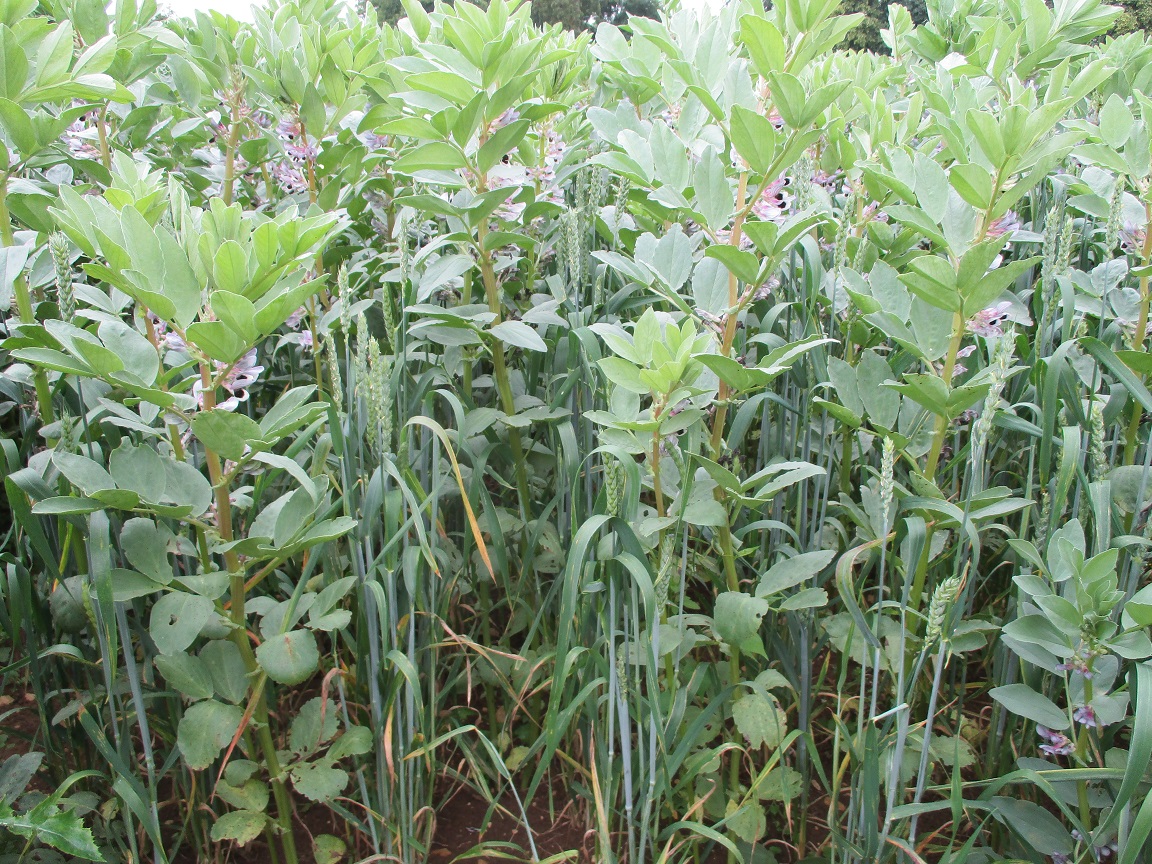Bi-cropping spring field bean (Vicia faba) and wheat (Triticum aestivum)
for UK whole crop forage production
RAU research looking at the effects of intercropping beans and wheat in relation to ecosystem services and forage production.
Resource explained
Cereals are known to contain a high level of carbohydrate, but a lower crude protein level limits their suitability as whole crop forage when grown as a monoculture. Bi-cropping can provide a more nutritionally-balanced forage, but crop species and how they are arranged spatially is important. A study conducted at the Royal Agricultural University (RAU) in spring 2015 explored the effects of spatial arrangements of bi-crop mixtures of wheat and beans with different growth characteristics on resource use efficiency and forage quality. 4 drilling patterns incorporating 2 bean cultivars (Fuego and Maris Bead) and sole and bi-crops of the wheat variety Paragon were trialled.
Findings & recommendations
- When compared to mono-cropping, bi-cropping can help you maximise on the use of natural resources such as light, water, and nutrients, whilst also boosting forage dry matter and nutritional values.
The results showed that:
- Crops grown in the 2 rows of wheat to 2 rows of beans alternate row arrangement performed better than broadcast or sole wheat, indicating the mutual benefits that can come from combining species.
- Bi-cropping outperformed sole wheat cropping in relation to chlorophyll content, the ability to catch light, and wheat grain and whole crop wheat forage crude protein (CP) levels.
- Light and chlorophyll is used more effectively in a bi-crop mixture (particularly alternate rows of bi-cropping) than a sole wheat crop.
- The bean cultivars influenced CP more than the drilling patterns.
- The cultivar Maris Bead consistently outperformed Fuego in relation to bean grain CP and whole crop bean CP.
- The bean cultivars had an equal influence on the chlorophyll content, wheat grain CP and whole crop wheat CP.
- Fuego bean cultivar intercepted more light than the Maris Bead bean.

(Image above shows 1 x 1 spatial arrangement; 1 row of wheat, then 1 row of beans. Header image: 2 rows of wheat followed by 2 rows of beans. Photo credits: RAU)


